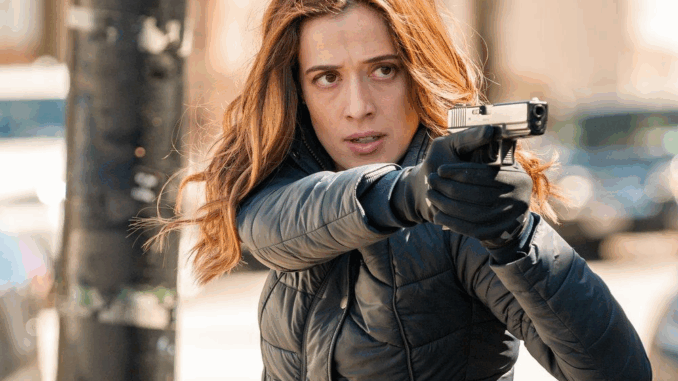
In a show filled with complex moral decisions, Chicago P.D. Season 11 delivered one of its most controversial episodes yet — and it all centered on Officer Kim Burgess. The episode, titled “Collateral Damage,” wasn’t just another case-of-the-week story. It was a psychological descent that left fans asking: how far is too far when it comes to justice?
It began like many Chicago P.D. cases — a child had been abducted, and the Intelligence Unit was racing against the clock. But for Burgess, this wasn’t just another case. It triggered painful memories of her own kidnapping and PTSD from earlier seasons. Throughout the episode, we watched as her calm professionalism cracked under the weight of emotion. And then came the scene that no one saw coming.
Burgess located the primary suspect before backup arrived. Instead of calling it in, she followed him into an abandoned warehouse — alone. What followed was one of the rawest, most disturbing sequences in the show’s history. She didn’t just interrogate him — she cornered, threatened, and emotionally broke him down until he gave her the child’s location.
But what crossed the line for many fans was how physical she got. While the show stopped short of showing outright brutality, the implication was clear: Burgess had used fear and intimidation far beyond what her badge allows.

NBC received an influx of viewer reactions, ranging from admiration to outrage. Some called it “Burgess’s most powerful scene ever,” praising actress Marina Squerciati for portraying trauma with chilling intensity. Others argued the episode glorified vigilante justice and undermined the very law Burgess is supposed to uphold.
The showrunners later revealed that the scene was even more graphic in its original cut. A deleted moment — since confirmed by post-production sources — showed Burgess pointing her gun at the suspect’s head during the interrogation, only lowering it when he begged her to stop. That scene was reportedly cut at the last minute due to concerns it would make the character irredeemable.
Even without the deleted footage, the aired version ignited a firestorm online. Reddit threads debated whether Burgess was unraveling or simply evolving into a darker version of herself. “She’s becoming Voight,” one fan posted. “And that should scare us.”
Squerciati later addressed the episode in a cast Q&A. “This was the hardest thing I’ve ever had to film,” she said. “Kim’s dealing with unresolved trauma, and this case made her confront the worst part of herself. But she still wants to do good — even when she’s drowning.”
The episode ended without clear consequences for Burgess, though it’s clear the writers intend to explore the fallout in future episodes. Will she be reprimanded? Will she face internal affairs? Or worse — could this signal the beginning of the end for Kim Burgess in the Intelligence Unit?
What makes this episode unforgettable isn’t just the darkness it explored, but the silence afterward. There was no redemption speech. No apology. Just Burgess, alone in her car, shaking — not from fear, but from the weight of what she had done.
And that leaves fans with one haunting question: when justice becomes personal… can you still wear the badge?
